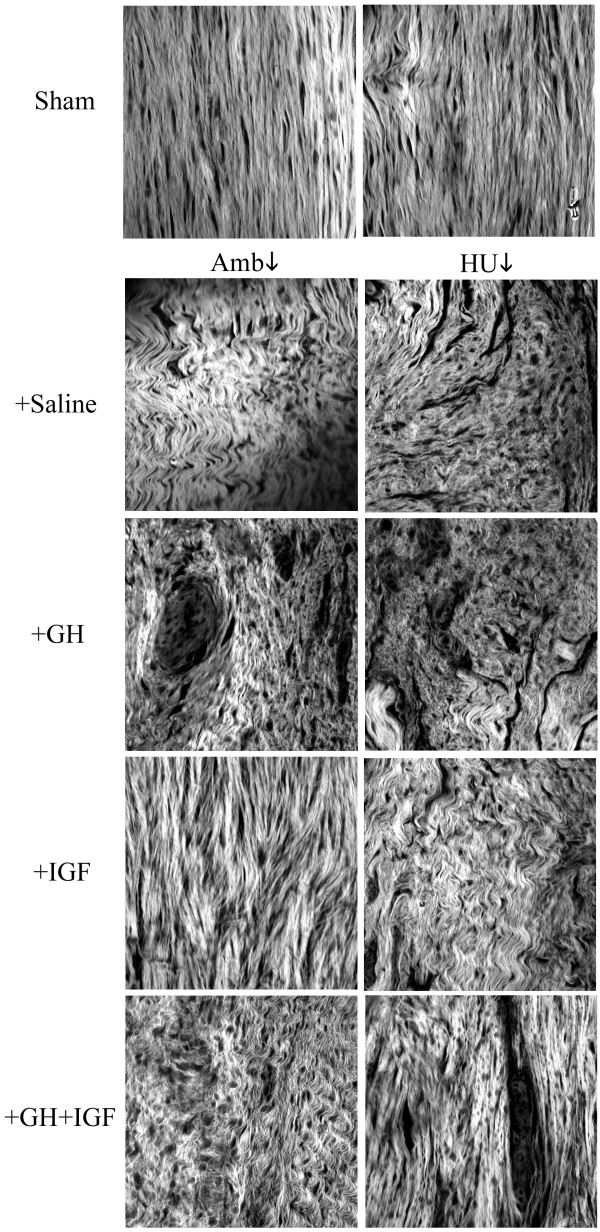Figure 5.
Multiphoton Laser Scanning Microscopy (MPLSM) was performed on hematoxylin and eosin sections in order to evaluate the organization and structure of the collagen matrix in more detail then allowed by conventional brightfield light microscopy. The longitudinal axis of the ligament is from the top to bottom of each image. Tissues from sham control animals have the characteristic crimp pattern associated with normal tissue (Sham). Scar tissue from ambulatory healing animals (Amb + Sal) revealed typical scar morphology with matrix disorganization while hindlimb unloaded animals (HU + Sal) showed good fiber aggregation but possessed abnormal scar formation with misaligned collagen fibers not directed along the longitudinal axis of the tissue creating voids and defects by not connecting. Assessment of collagen matrices from GH treated animals revealed no improvement in matrix organization in tissues from ambulatory (Amb + GH) or hindlimb unloaded (HU + GH) animals. Examination of collagen structure in animals treated with IGF-I supported data shown in Fig. 4 revealing greatly increased matrix density and considerably improved matrix alignment in tissues from ambulatory (Amb + IGF) and hindlimb unloaded (HU + IGF) animals. Animals treated with GH+IGF showed no significant improvement in ambulatory tissues (Amb + GH + IGF) but unloaded tissues (HU + GH + IGF) showed substantially increased matrix density and alignment.

